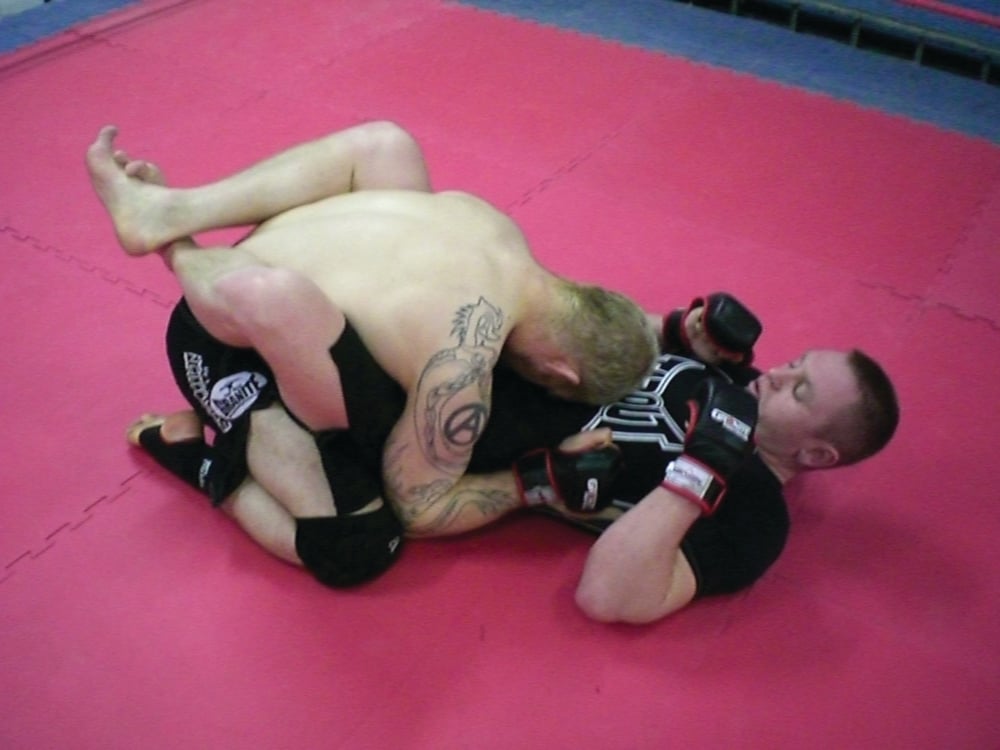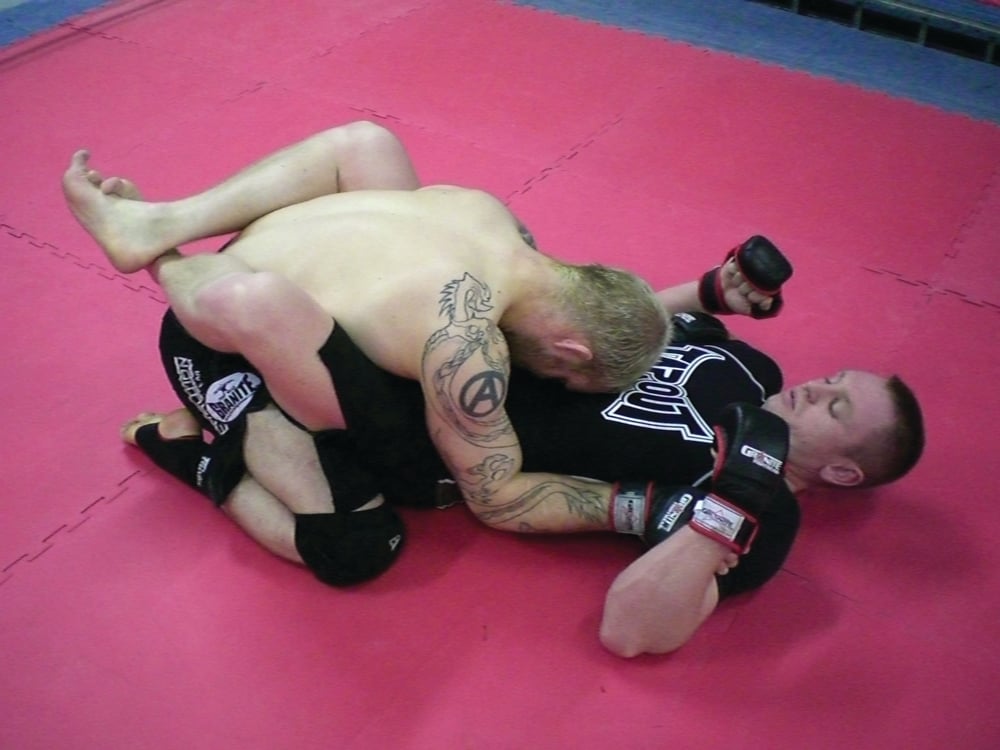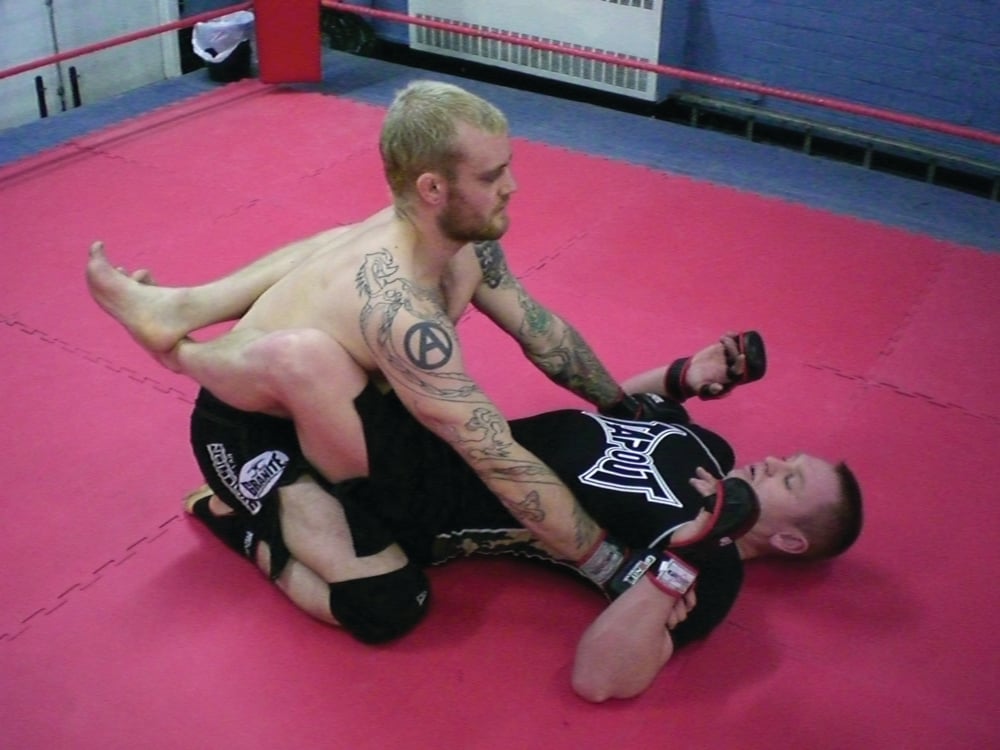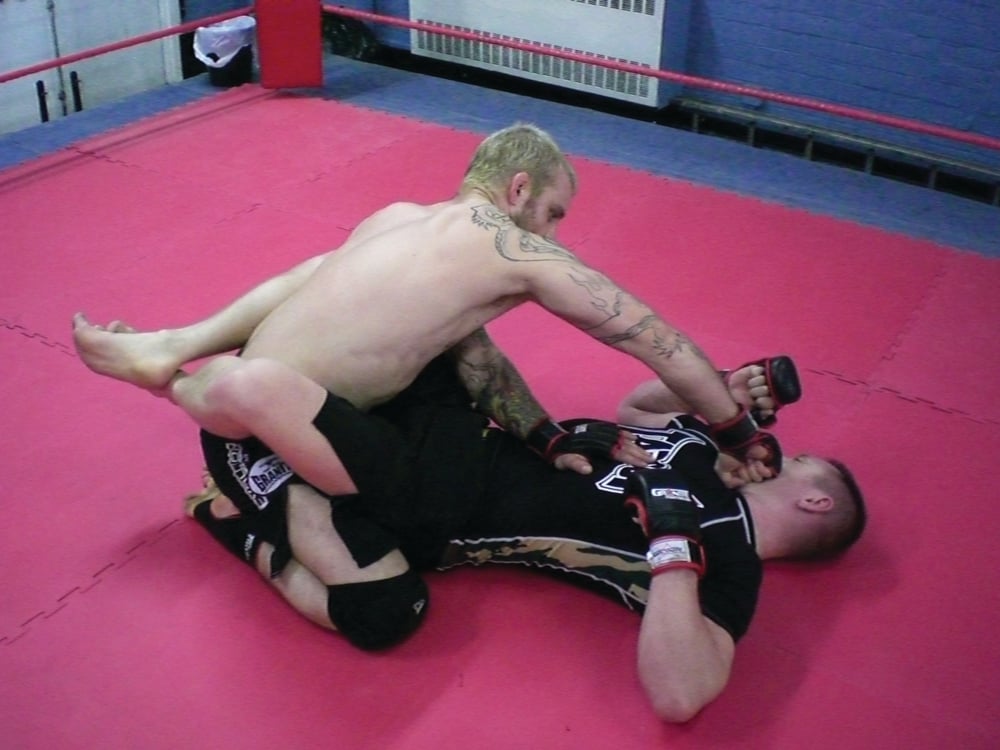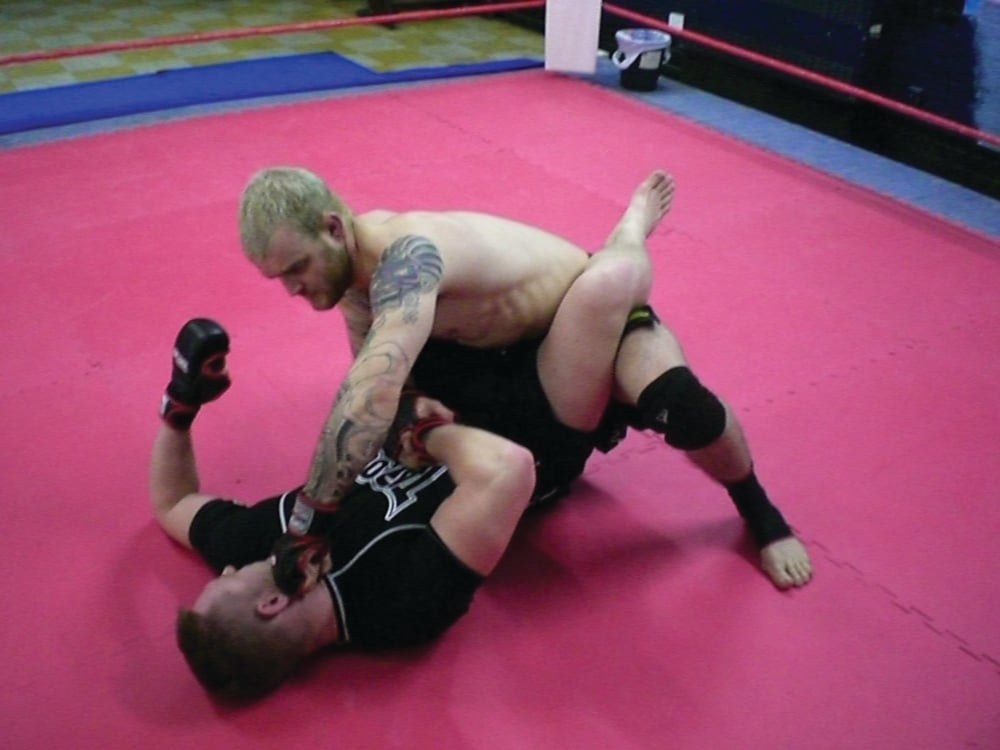
Issue 022
November -0001
Posturing up within the guard for more powerful striking.
1. The top man neutralizes hip movement with his elbows and prevents submission attacks on his arms and neck by staying low and tight. He can chop away with short hooks, but to deliver more powerful shots he needs to posture up.
2. Bicep control is a good way of keeping inside control, effective in neutralizing punches and elbows from the bottom man, and freeing yourself from head control. Use the thumb inside in the armpit to pin the arm and stop the bottom man re-pummelling for his own inside control.
3. With the bicep control you can gain better posture, sitting back with your butt on your heels and the chest out, not hunched over.
4. The typical jiu-jitsu resistance grip under the ribcage or on the hips is good for keeping your arms safe but leaves your head open.
5. A one-arm resistance grip on the sternum can pin the bottom man flat on his back, stopping him from breaking down your posture or hipping out and getting back to
his feet.
6. The free hand can deliver hooks or overhands.
Hand fighting and the power leg
1. This image shows incorrect posture – the elbows are out and leave the top man open to underhooks and other attacks.
2. Correct posture – the top man has superior hand positioning, pinning the bottom man’s hands down. From here he can choose to strike with either hand.
3. Here the bottom man has gained superior hand position – with his hands on top he can utilize his wrist controls to deflect strikes from the top man or let go and throw a punch up from his back.
4. Here the top man goes from the inferior position to a cross grip, using one hand to strip the grip from the other – leaving both the bottom man’s hands committed on his left side, giving a ‘free shot’ on the right.
5. With a cross grip the top man steps his ‘power leg’ up to deliver a big shot. Note the elbow on the far side is controlling the bottom man’s hip, pinning between elbow and leg to stop him escaping. You can drop your power leg back to the mat as you strike, giving the shot more weight. Once the shot has been delivered, return to posture and inside control.
6. The cross wrist control leaves the bottom man without effective cover for the overhand right or elbow strike. Note the top man drags the wrist to the opposite side of the body – not reaching across, which would endanger his arm to a submission attack and would free the bottom mans hips.
...

